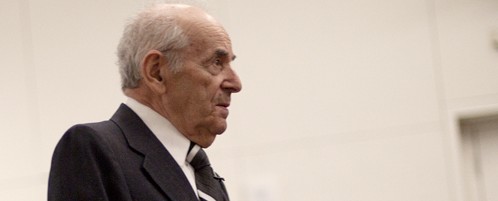PSU researchers help oust predatory crabs
Two PSU professors hope that their new research grants will help remove and prevent the spread of a predatory creature that has been known to invade and alter ecosystems–the green crab.
The professors, Mark Sytsma and Catherine deRivera, have been working since June 2006 on a project to remove green crabs from a bay in California in an effort to prevent them from spreading to the rest of the west coast, and in hopes of applying their methods to Oregon coastal regions in case the crabs do spread.
The green crabs, which are native to Europe and not the U.S. West Coast, prey on animals that many native species of fish and birds use as food sources. The green crabs are known to have threatened the soft-shell clam industry in Maine and could threaten Dungeness crab, oyster and clam fisheries and aquaculture operations in the Pacific Northwest and British Columbia, according to the University of Washington Fish and Wildlife program.
Sytsma, associate professor of environmental sciences and director of the Center for Lake and Reservoirs at PSU, and deRivera, assistant professor of environmental sciences, have collaborated with professors from University of California at Davis, several graduate students and a team of technicians for the project. They said that they hope the two grants they received, $150,000 from the National Oceanic and Atmospheric Association and $75,000 from the Pacific State Marine Fisheries Commission, will be enough to help the species in danger.
”The goal is to demonstrate the capacity for local removal of the crabs,” deRivera said. “We’re hoping we can remove them so the native species can rebound.”
Sytsma and deRivera are currently involved in a crab removal project at a UC Davis lab on Bodega Bay, right outside of San Francisco, where their team hopes to eradicate the entire population of green crabs. At least 12,000 crabs have been removed from the bay since June, according to deRivera, but it is unknown exactly how many remain.
”Our original estimate for adult crabs was 9,000,” deRivera said. “We underestimated the population, but it’s part of the study. We’re learning as we go and it will help us estimate in the future.”
Crab traps have been the only method of removal so far. However, the technicians plan to start snorkeling for crabs in coming weeks, deRivera said.
”Catherine does most of the field work, but I’ll be going down in January for the first time,” Sytsma said.
The project is being headed by the Aquatic Bioinvasion Research and Policy Institute (ABRPI), which is an institute established in 2004 between Portland State University and the Smithsonian Environmental Research Center. Their mission is to “advance an array of collaborative and coordinated research, education and outreach activities that focus on the biological aspects of invasions in aquatic (marine and freshwater) ecosystems.”
”It fits in nicely with the state plan and it presents the opportunity to do some interesting science,” Sytsma said about the Bodega Bay project. Sytsma is also the co-director of the ABRPI.
Several terrestrial eradications have been successful in the past, but this is the first time anyone has attempted the same thing in a marine system, according to deRivera. She said what is difficult about the green crabs is that they are not self-sustaining, but rather are spreading around the region.
”We’re learning more about the connectivity between endangered animals and different species,” deRivera said.
Sytsma has been a professor at Portland State since 1994 and is currently involved on a project that surveys the entire Columbia River. This is deRivera’s second year at PSU, and in addition to being a professor of environmental sciences, she teaches a sophomore inquiry on environmental sustainability.
”Both teaching and research make the other one exciting,” deRivera said.



